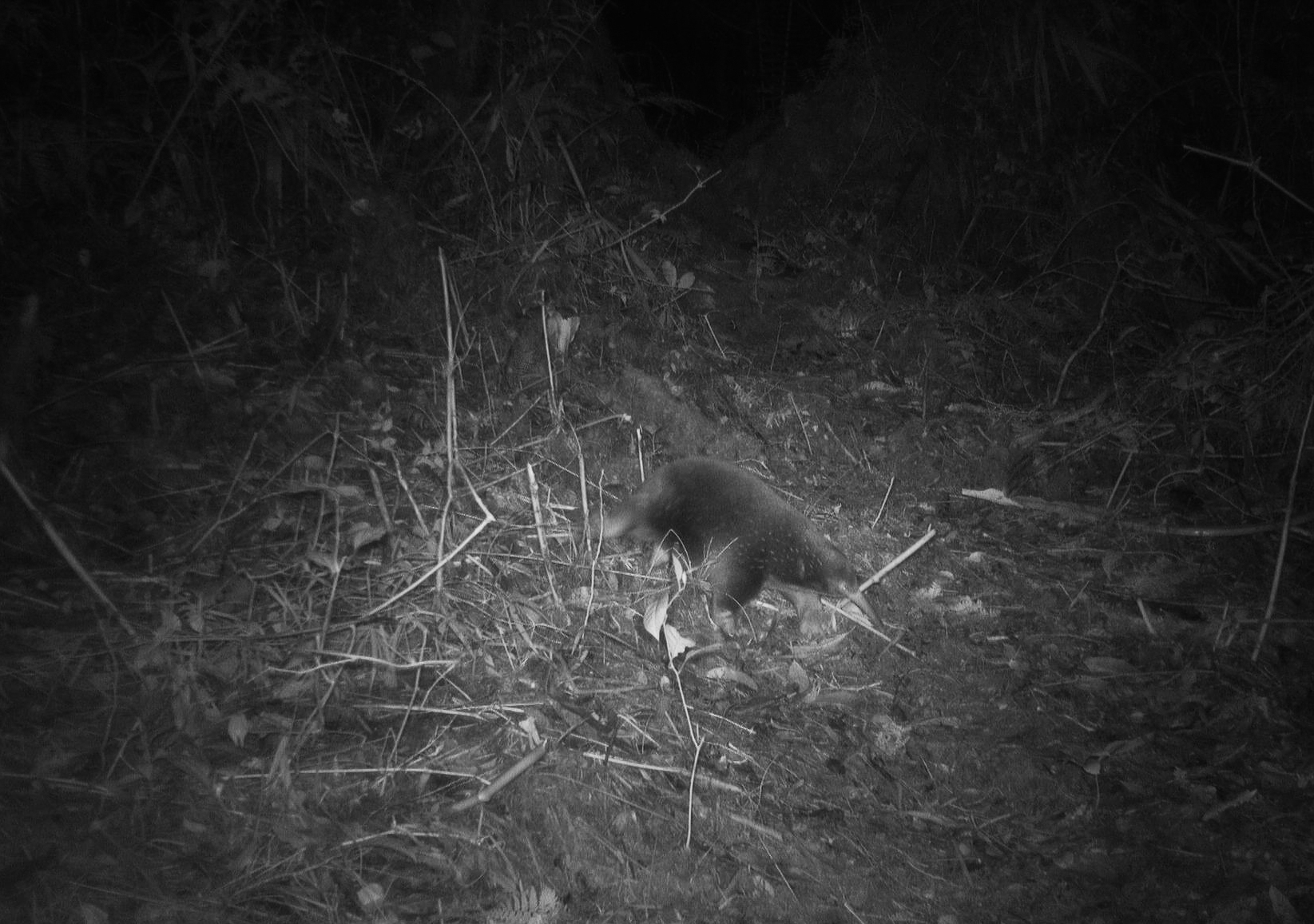Lost species, or those only observed from a few encounters, are often presumed to have gone extinct or exist in extremely limited numbers. One of the reasons it’s hard to be sure is that most of these species live in remote, inaccessible areas and are elusive, coming out only at night or hiding away in burrows and caves. Now, new camera trap footage has revealed a species not seen since 1961, as Attenborough’s long-beaked echidna comes waddling back into view.
Attenborough’s long-beaked echidna (Zaglossus attenboroughi), named after wildlife broadcaster and natural historian Sir David Attenborough, was captured for the first time ever on camera in the Cyclops Mountains of Indonesia. The team, led by Indonesian NGO Yayasan Pelayanan Papua Nenda (YAPPENDA), managed to gather footage of the echidna, also known as “payangko” in the Tepera language, using more than 80 remote trail cameras set up within the rainforest.
“To see photos of this endemic species is both encouraging and inspiring. The payangko holds a special place in the traditions of the Indigenous inhabitants of the Cyclops and is emblematic of Cyclops’ conservation efforts. We hope this story inspires renewed interest and motivates increased protection for this unique place,” said Malcolm Kobak, cofounder of YAPPENDA, in a press release sent to IFLScience.
The Attenborough’s long-beaked echidna is one of four species of monotreme, a pretty funky group of animals – also featuring the duck-billed platypus – that all inhabit Australia, Tasmania and New Guinea. They also represent a unique corner of natural history, with monotremes having evolved independently of other mammals 200 million years ago.
Until now, the only evidence of this species of echidna was a single museum specimen collected by a Dutch botanist in 1961. More recently, fieldwork expeditions have sought to find the elusive species; while there were signs suggesting the species still persisted, such as poke holes made by the echidna’s nose, actual sightings or camera trap data have been lacking.
This latest expedition, which was three and a half years in the planning, took the team deep into dangerous lands; the team suffered injuries including an arm broken in two places, a leech behind the eye, and one member contracting malaria. The team was in the forest for four weeks, and the cameras recorded no sign of the elusive monotreme – or so they thought. The last memory card with the final images revealed the animal they had all been waiting for.

Poke holes from the long beak of the echidna had led the team to believe it might still exist. But the proof is very much in the camera trap pudding.
Image credit: Expedition Cyclops
“Before this expedition, we knew of only four monotreme species certain to have survived to the modern day: sole survivors that protect a unique and fragile evolutionary history. Attenborough’s long-beaked echidna is another, crucial guardian of this ancient lineage, and finding it after years of preparatory toil and weeks of discomfort in the field, was a moment of pure catharsis,” said James Kempton, postdoctoral researcher at the University of Oxford and leader of the expedition.
With so few people having seen the animals, little is known about their ecology or behavior. After previously being presumed “lost”, Attenborough’s long-beaked echidna became one of Re:wild’s most wanted lost species, as well as an EDGE species. It’s also a critically endangered species on the IUCN Red List, so with its rediscovery, the organizations involved have called for better protection of its habitat and the species within.
“Under Indonesian law only two monotremes are listed as protected species: the short-beaked echidna and the western long-beaked echidna. However, alongside the eastern long-beaked echidna, the rediscovered Attenborough’s long-beaked echidna is not protected, and it is important that follow-up work is undertaken to evaluate the conservation status of these monotremes and ensure they are appropriately protected,” said Amir Hamidy, Secretariat of the Scientific Authority for Biodiversity at BRIN.
The team also discovered several new species, including a tree shrimp, and saw a Mayr’s honeyeater, a bird species that had not been seen since 2008.
“We believe that our rediscovery of Attenborough’s long-beaked echidna will allow it to serve as a flagship species and a beacon of hope for the preservation of Mount Cyclops’ entire forest ecosystem. Our team’s discoveries, including numerous previously unknown arthropod species, underscore the significance of this extraordinary habitat,” said Leonidas-Romanos Davranoglou, a Leverhulme Trust Postdoctoral Fellow, entomologist at the Oxford University Museum of Natural History, and expedition team member.
The team will be submitting a manuscript detailing the rediscovery to the preprint server bioRxiv shortly.
Source Link: Attenborough's Long-Beaked Echidna Rediscovered After 60 Years – See The First Ever Footage